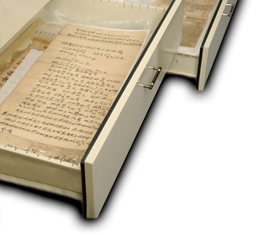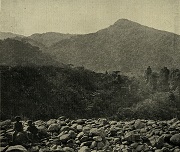|
According to the source of records, the archives are categorized into three groups: Family Papers, Personal Papers, and Institutional Archives. The features and contents are as follows: I. Family Papers Most family papers now preserved in Taiwan are the first-hand records of clan kinship and estate certificates, including land contracts, allotment agreements (on family property), personal contracts, family instructions, account books, genealogies, and correspondence. For instance, the Pan Family Papers of Anli Tribe (1732-1888), the Lin Family Papers in Lungching, Taichung (1742-1942), the Chang Da-jing Family Papers(1769-1906), the Hsu Zhi-hu Family Papers in Lugang (1895-1898), Photographs of the Liang Shun-lai Family in Kinmen (1877-1986), the Wang Jun-zheng Family Papers in Hainan (1712-1948) are the records related to trades of land or humans and business activities. II. Personal Papers Documents which were created or preserved by an individual are called personal papers. This category contains diaries, manuscripts, legal documents, correspondence, postcards, and paintings. For example, Yang Yun-ping Papers (1929-1997), Michael H.Finegan Collection, The Diary of Lin Hsien-tang(1927-1955), Sun Jiang-huai Papers (1906-2003), Kao Ci-mei Papers (1910-2006), Ikeda Koujin Papers (1910-1924), Yoshioka Kisaburou Papers (1907-1939), Nakada Shuuzou Papers (1903-1917), Yang Zhao-jia Collection (1897-1984), Chen Cheng-po Paintings and Papers (1904-2003), and records created by local people and foreigners are all in this category. Family Papers and Personal Papers include about 25 thousand items and 270 thousand pages of digital images. III. Institutional Archives The Institutional Archives are the original records created or received by legal persons. The document formats are varied since they were created in different time periods. In order to obtain the digital images of archival materials and to provide application services, we start digitalization projects by working with other organizations. The Institutional Archives contain Official Documents of Taiwan Government-General (1895-1947), Official Documents of the Monopoly Bureau of Taiwan Government-General (1895-1947), Forestry Records created in the Japanese colonial period and after WWII (1895-1975), the Operational Records Transferred to Land Bank of Taiwan by Taiwan Development Company (1920-1949), Records of Japan Kangyo Bank's Branch Office in Taiwan (1922-1949), and Records of Taiwan Provincial Assembly (1946-1998). Institutional Archives include about 88 thousand items and more than 6.5 million pages of digital images.
|




